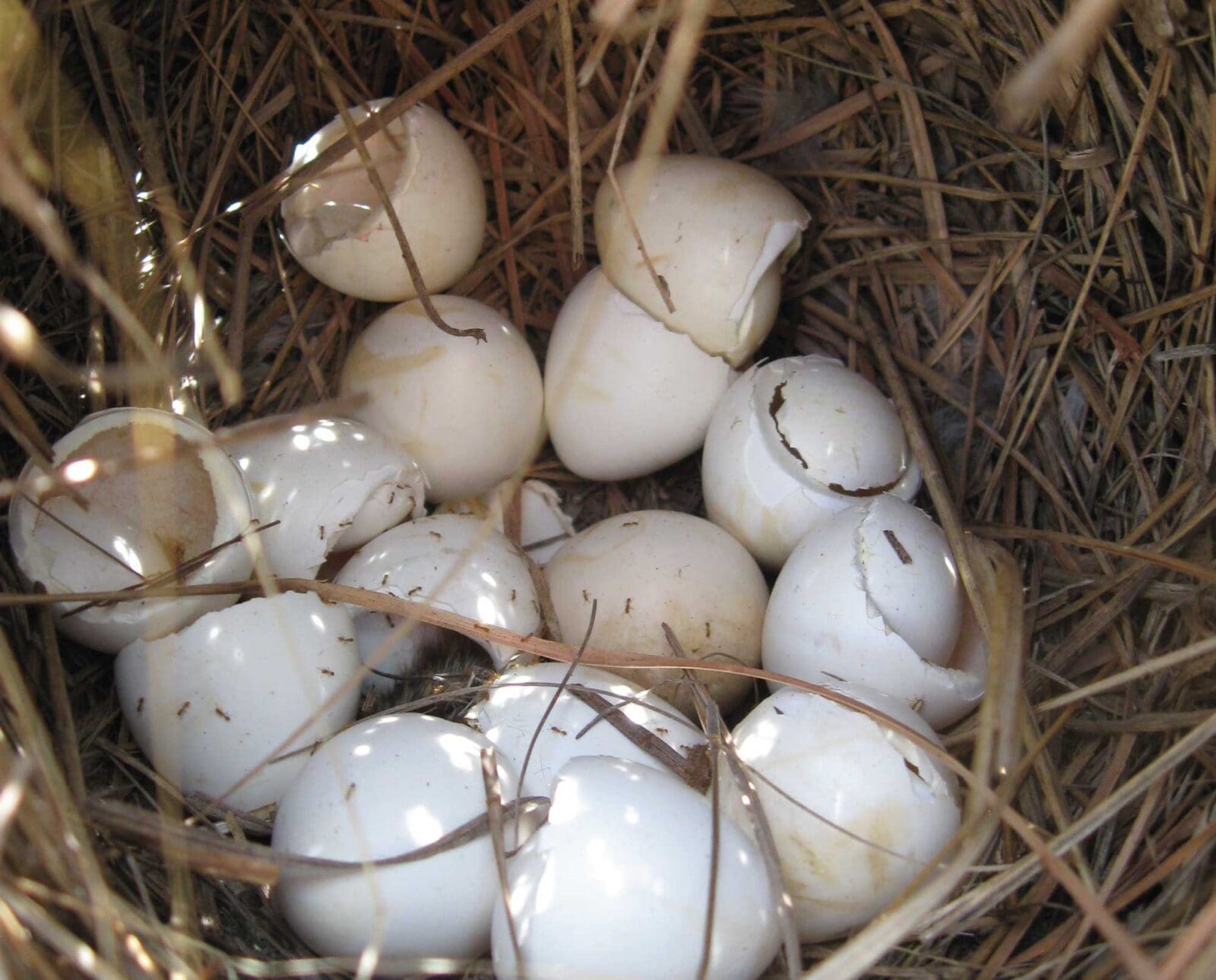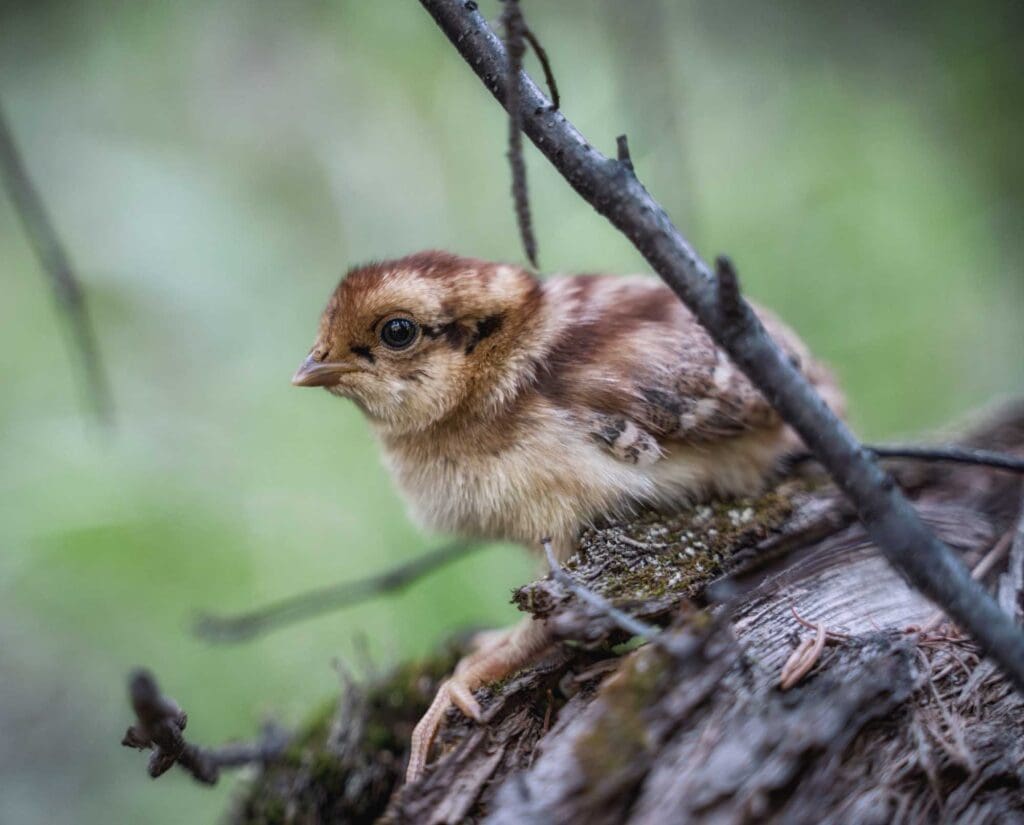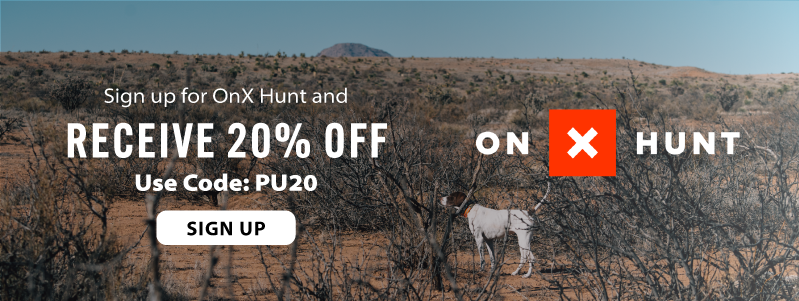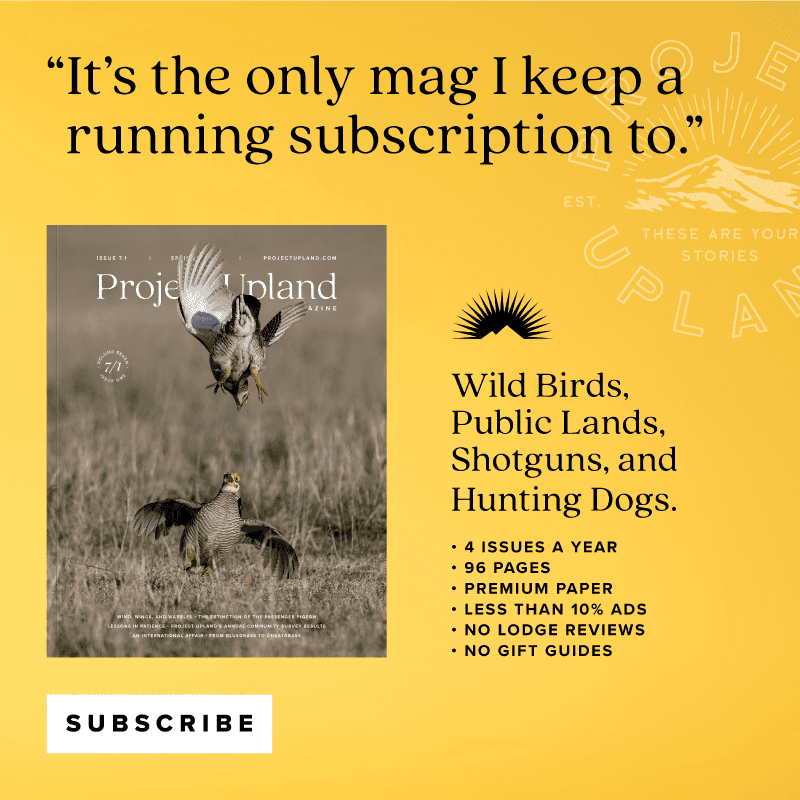Home » Quail Species » Bobwhite Quail Hunting » The Science of Bobwhite Quail Nesting Dates
The Science of Bobwhite Quail Nesting Dates

Frank Loncarich has been a wildlife biologist for over 20…
Have we been all wrong when it comes to Northern Bobwhite nest hatch timing?
As a bobwhite quail biologist, one of the first things I learned was that the peak of the bobwhite quail hatch occurs on June 15th each year.
Listen to more articles on Apple | Google | Spotify | Audible
This peak date has become so pervasive in the quail world that it is dogma. This date is accepted at face value, dictating timing of summertime habitat management and even state and Federal agency policy. But is this “fact” of quail biology true? And, if not, have quail managers been operating on a paradigm that might have been detrimental to bobwhite management for over three decades?
Let’s look at where the June 15th peak originated and what new science is telling us about the bobwhite hatch. The lessons learned should have major implications to how we think about bobwhite breeding ecology and bobwhite management in the future.
A History Lesson in Northern Bobwhite Management
Jack Stanford was a famous quail biologist for the Missouri Department of Conservation in the mid-20th century. His word was gospel for generations of quail biologists. He did groundbreaking work and expanded our knowledge of bobwhite ecology in ways never seen; his contributions should be lauded. One of his most famous contributions was to utilize roadside observations of quail broods from statewide field agents. These agents collected brood data as they performed their daily activities.
These observations were used to estimate bobwhite hatching dates. The agents would estimate the age of these broods by noting the size of the chicks and report these observations back to Stanford. He then used this data to determine that the peak of quail hatch in Missouri was June 15th. Furthermore, he reported that in favorable hatch years, meaning average weather conditions with no drought or excessive rains, the peak of the bobwhite hatch was June 15th and that 64 percent of nests hatched by July 15th. These numbers became the standard for Missouri and much of the quail world, driving habitat management recommendations ever since.

New Bobwhite Data
From 2006 to 2011, I collected wings from hunter-harvested bobwhites at a public wildlife management area in Missouri to better understand the dynamics of the local population. Many hunters know that one can differentiate between adult and young-of-the-year bobwhite by wing characteristics. However, few know that early in the hunting season, the primary feathers on a bobwhite wing can be measured and a date of hatch can be determined.
I aged 93 wings over that period and found that only 6 of those harvested birds were hatched on or before June 15th; this did not match what I had been taught at all. I began to worry about the potential quail nests that I had inadvertently disturbed when I had my staff burning fields, spraying herbicide, and doing other field work. Field work began after June 15th based on that widely held peak hatch date, yet my wing data was telling me this midsummer period was a critical time for quail hatching. I immediately began to rethink my management strategies and establish new protocols for when and how we were doing field work in the summer.
Building a Bigger Dataset on Bobwhite Quail
My data, however, was very local and a small sample size. I knew we needed more data to make stronger inferences to understand what was really happening with quail hatch timing. Luckily, a fellow biologist, Kyle Hedges, and I were leading a seven-year study of quail breeding ecology on six wildlife areas in southwest Missouri at the time. During that study, we were able to monitor bobwhite nests for hatch dates, success rates, and causes of predation.
We were able to record 176 successfully hatched nests during our study. This number in itself is eye-opening considering we monitored over 500 nests! Of those 176 nests, only 15, or 8.5 percent of nests, were hatched on or before June 15th. This is a far cry from the commonly accepted June 15th peak hatch date. Furthermore, the median hatch date for all nests was July 17th, meaning just as many nests hatched after that date as before. We also noted a couple hatching peaks. One occurred from June 5th through July 12th during which 49 percent of the nests hatched and the other happened July 27th through September 6th when 39 percent of the nests hatched.
What does this mean for bobwhite management? First, and most important, the entire summer period is important for bobwhite nesting. Bobwhites are incubating and hatching nests throughout the summer period and even earlier in the South. But there is more to the story. A typical bobwhite nest cycle takes 55 days from egg laying, through incubation, culminating with hatching. That means that the nest hatched on July 1st was initiated in mid-May and a nest hatched on September 15th was initiated in early August. Not only this, but newly hatched quail broods are also very vulnerable for the first two weeks of their lives because they cannot fly. As a result, disturbance to nesting cover should be minimized during this critical period.
Our Data’s Impacts on Northern Bobwhite Management
Land managers have been utilizing prescribed fire in the summer for bobwhite management more often. Summer fire can be very useful for reducing grass dominance in a field and controlling tree invasion. However, many of these fires occur in July and August, a time many managers believe is safe to burn based on the widely held belief that June 15th is the peak of the quail hatch. If one is interested in maximizing quail survival and fall populations, this burn timing is much too early. Instead, consider holding off until September or October when many of the same objectives can be met.
Additionally, Federal agencies often allow managers to hay, graze, or mow grasslands enrolled in the Conservation Reserve Program (CRP) during the summer months to provide forage for cattle during drought conditions or required tree encroachment control. Federal policy states that these activities cannot be done during the primary bobwhite nesting season which they define as May 1st through July 15th. CRP fields often provide the only suitable bobwhite nesting habitat in many areas dominated by cropland and allowing landowners to disturb these areas after July 15th is putting many bobwhite nests in jeopardy. The results of our study should give CRP policymakers pause, and a reevaluation of the primary nesting season dates is encouraged.
What about renesting? Many know that bobwhites can renest after a nest has been destroyed. Folks that see very young chicks in August often proclaim those birds were from a second nest or even a second hatch. Our data tells a different story. We only found 13 percent of hens will renest after their first nest is destroyed. That means the first nest is of utmost importance and managers cannot always rely on hens to renest if their first nest fails.
Just Because it’s Dogma Doesn’t Mean it’s Right
The efforts made by past biologists to understand bobwhite ecology have been Herculean, providing valuable guidance on bobwhite conservation for nearly 100 years. However, science is not static. Biologists today have technology available that our counterparts of old could have never dreamed. Radio-collared birds allow us to know within hours when a nest hatched, providing much more precise estimates than roadside observations of broods collected by field agents of varied skill.
For the land manger interested in maximizing bobwhite numbers, stay off that mower between May and September, delay burning until the fall, and be strategic when conducting any summertime field management. With bobwhite populations struggling more than anytime in recorded history, it is imperative that we do whatever it takes to ensure birds have every chance to successfully raise a brood. There are enough dangers to quail in the natural world, we certainly do not need to add to them.
Frank Loncarich has been a wildlife biologist for over 20 years, specializing in bobwhite and grassland management. He is also a Habitat Consultant for Land and Legacy.






I totally agree with your findings. Almost every November when we started quail hunting, we ran into very young birds. Quail that were so young, they could barely fly. I’ve always questioned the June peak nesting season for that reason.
I no longer quail hunt, as the bird population is so low. I still keep a bird dog, but she’s more of a pet than a hunter.
We are seeing a few more birds the last few years, but still not huntable populations, in my opinion.
Thanks,
Jeff
Thank you for your comments! Hope the birds in your area can make a comeback!
Frank
Great article! I find your research to be of great value for those who try and manage CRP for wildlife. I will be interested to watch and see what changes may come from your valuable research! Thanks Again! Shawn
Thanks Shawn! Feel free to email me @ frankloncarich@gmail.com with any questions!
Good to hear from you!
Frank
The assertion that a June 15 nest initiation date “has become so pervasive in the quail world that it is dogma” may well apply to work done in Missouri, although, when I consider the range of climate in that state, I find it difficult to believe that anyone would seriously assert that nest initiation around Cape Girardeau occurs at the same time as initiation up north of St. Joseph. June 15 nest initiation wasn’t exactly dogma for Val Lehman in Texas (about 44 percent of successful nests in his study were initiated before June 10 and 31 percent were initiated after July 1). Pioneer quail biologist Herbert Stoddard said the important part of the nesting season in Georgia was “May, June, July, and August.” Kabat and Thompson in Wisconsin figured that half the chicks they found came from eggs laid before July 13. Nests initiated from then until September 20 accounted for the other half of production. Klimstra’s work in southern Illinois in the 1950s showed a broad nest initiation from April 15 to August 15 with a broad peak around June 10. If managers in Missouri are doing a lot of burning immediately after June 10 with the expectation that most bobwhite nests have already hatched, they should certainly revisit that decision. But to say that a June 15 nest initiation date is some sort of dogma in the technical community ignores a lot of venerated research and also neglects the idea that bobwhite nesting ecology isn’t the same in Texas and Georgia as it is in Iowa and Wisconsin. The state of Missouri spans a huge range of landscapes and climatic regimes, a fact that should be taken into account before any generalizations about nesting ecology are used to drive habitat management.
I completely agree with you and those other findings. In fact, I used many of those references when I wrote the scientific journal article about this data. The literature is full of great data, but for some reason the June 15 date has been pervasive in Missouri, and the midwest in general, despite the latitudinal differences from north to south and despite the data that has historically been collected. One can see that by looking at the primary nesting season set by NRCS. Most managers in Missouri were not lighting fires just after June 10, but certainly many are set in late July -August.
This pervasive application of the June 15 hatch date has been a huge problem for me as a quail biologist that tries to help managers make good decisions.
I’m saying it is dogma in today’s Midwest quail world because I see it so much. I should have been more clear this is a midwest issue more than a range wide issue
Thank you for your well researched and informative comment! We are on the same page on this.
Frank
I live in extreme S/E Colorado with both blues and bobwhites. Every year I see quail chicks in August and September. I seldom see them in June/July. We haven’t had good wet Springs but have had some summers with good rain. My belief has been the later Summer rains get the hens ready for nesting. Just my observations. I certainly agree with Franks research for my part of the country.
Stan, thansk for the comments. Quail species are so dynamic, that’s 1 reason why they’re such a cool group of birds. Hope you have good hatches in your area this yeat!